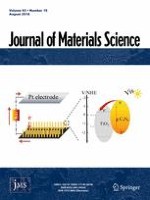03-05-2018 | Chemical routes to materials
PLA degradation pathway obtained from direct polycondensation of 2-hydroxypropanoic acid using different chain extenders
Published in: Journal of Materials Science | Issue 15/2018
Log inActivate our intelligent search to find suitable subject content or patents.
Select sections of text to find matching patents with Artificial Intelligence. powered by
Select sections of text to find additional relevant content using AI-assisted search. powered by
